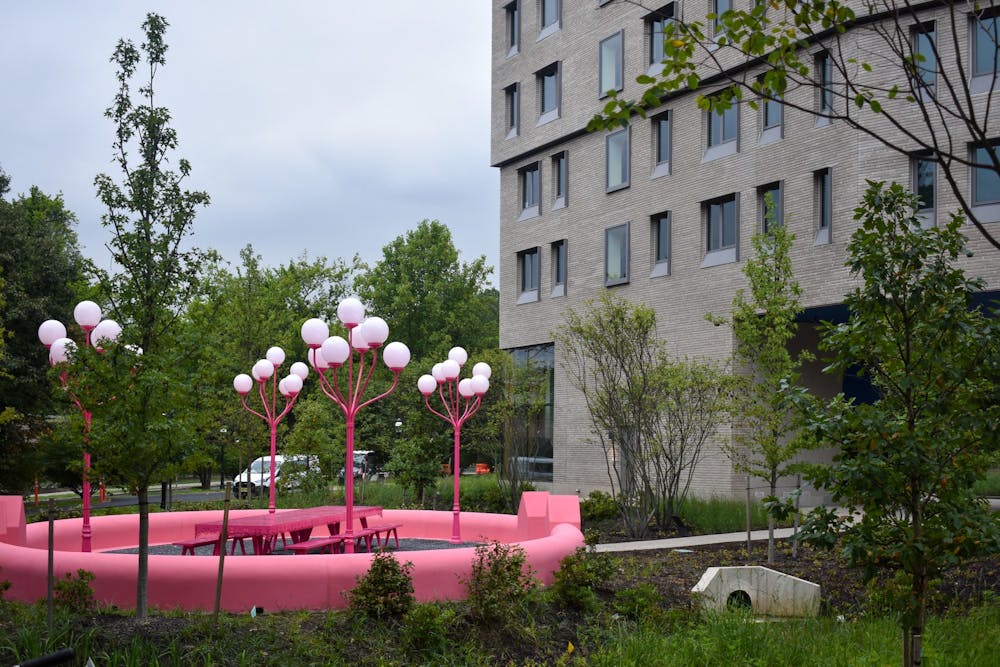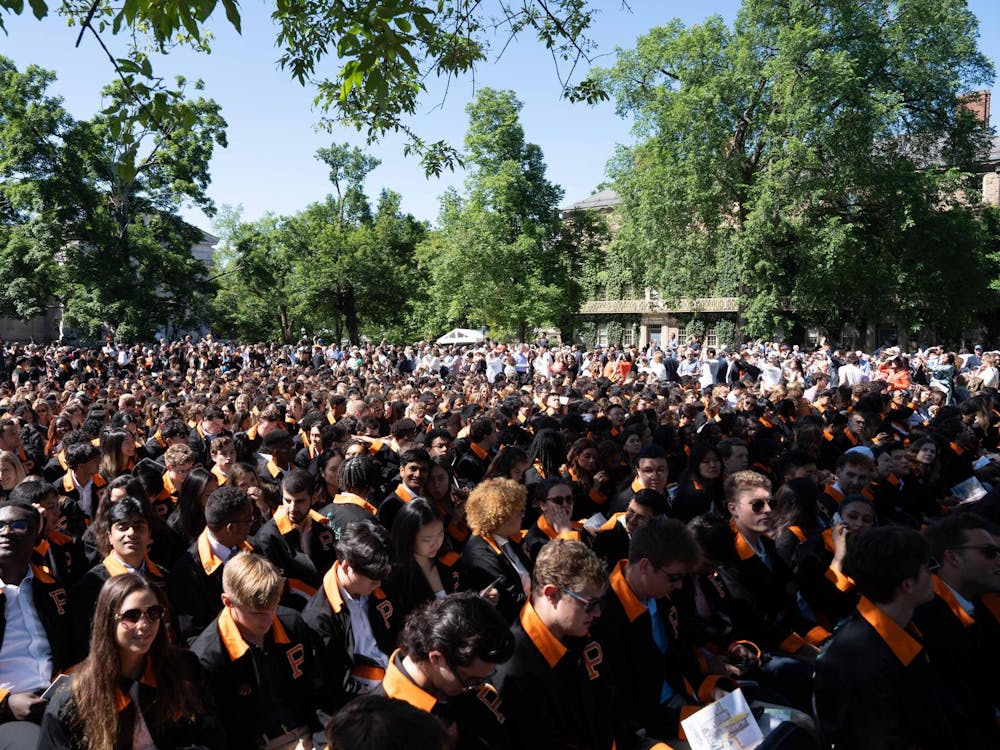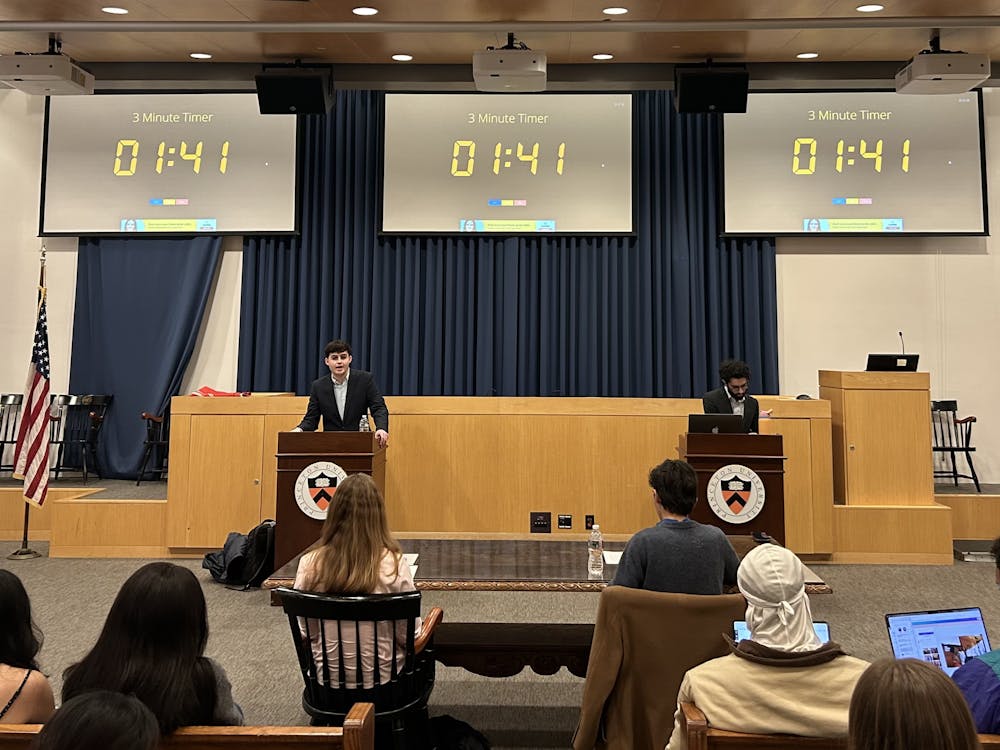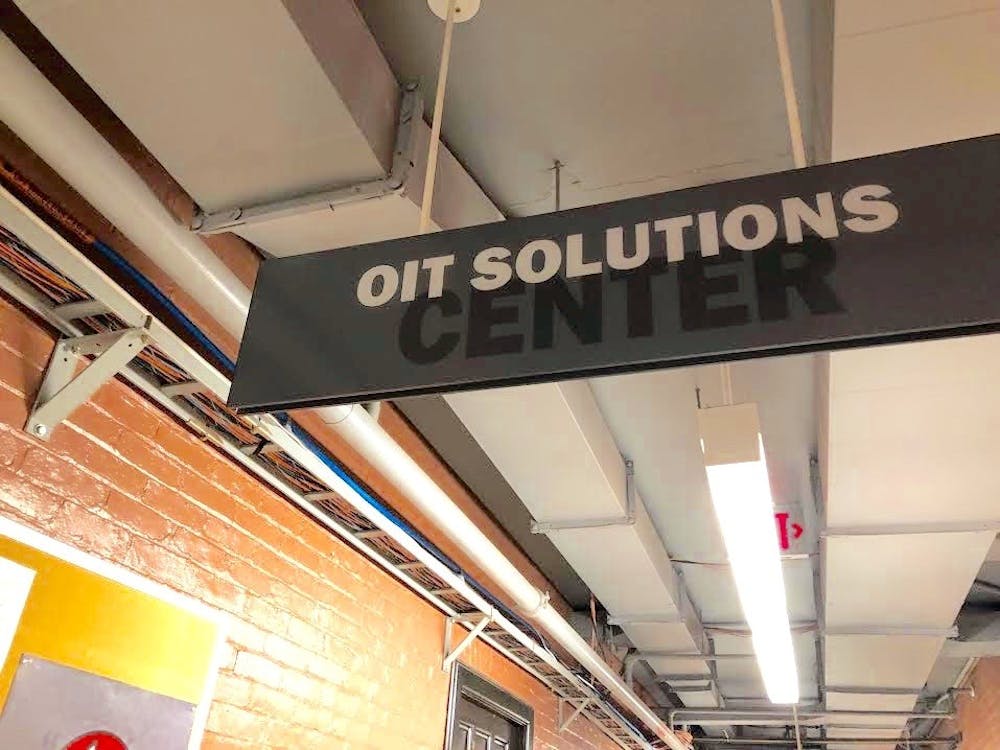Princeton’s campus is known for its history, beauty, and art. Scattered throughout our main campus’s nearly 600 acres are dozens of hidden (or not-so-hidden) gems, pieces of art that make campus a museum in its own right.
We currently enjoy the work of famous artists daily, and they are an invaluable part of our campus. In the future, the University should prioritize acquiring and displaying campus art by artists local to Princeton and the surrounding communities in order to foster public discourse around place and privilege.
The Princeton University Art Museum maintains an excellent database of campus art. They count over 75 sculptures, murals, friezes, and more on display both outside and inside. These range from “Resonance,” ghostly cloud-like creations of the artist Kendall Buster that haunt the atrium of the Frick Chemistry Laboratory, to Odili Donald Odita’s “Up and Away,” vivid lines painted directly onto the walls of a Butler College staircase.
This art isn’t mere decoration. It’s part of a conversation that unfolds across space and time, people and places — whether we’re aware of it or not.
When you walk by a piece of art, you may not even be consciously aware of the exchange you are having with it. Some pieces have clear messages; they represent people or things with precision. Others are more subtle. Passing Murray-Dodge, perhaps George Rickey’s sculpture “Two Planes Vertical Horizontal II” catches your eye. The sun glints off its angled polished surface, creating the illusion of the movement, and stops you for a moment — prompting you to look at the sky and feel the wind — to become more rooted in place and space. Standing in the peculiar calendrical panopticon of Ai Weiwei’s “Circle of Heads,” you may feel the heavy, dreadful feeling of being watched. You are encircled by the inescapable progression of time (the zodiac) and sense the weight of the past. On the other hand, walking by Frist late one evening, Daniel Chester French’s statue of Benjamin Franklin may scare you half to death until you realize that isn’t someone standing up there. A conversation with art flows on a level deep in our consciousness.
Looking at a piece of art isn’t a passive experience for the viewer or the art. Take Maya Lin’s “The Princeton Line,” a part of her “Earth Drawing” series: a gently arcing, undulating slope of earth carved into a hill adjacent to the Lewis Arts Complex. In an interview after the piece’s unveiling, Lin explains that its inclines and declines (or the winding path of irregular stairs around it) force you to choose to take each step and to be more aware of how you interact with the earth. This is part of her effort to draw attention to global warming — and its devastating impacts on the capital-e Earth — by creating a dialogue between humans and the ground, the art and its viewer.
But Lin also urges a broader takeaway from her piece: “get to know what’s right underfoot, understand what’s going on in your community.” Lin is right. Currently, Princeton’s campus art collection is dominated by monumental works by renowned artists — Pablo Picasso, Alexander Calder, Sol LeWitt, Ai WeiWei, Isamu Noguchi, and Lin herself, to name a few. While the campus art collection increasingly reflects a diversity of artist backgrounds through recent artwork additions, there are no works in the Art Museum’s catalog identifiable as being created by artists local to Princeton or to our surrounding communities. If public art represents a conversation, there is a notable silence of these voices.
Princeton often emphasizes the centrality of its commitment to open dialogue and its relationships to nearby areas. Yet this isn’t reflected in our public art. The University should make an active effort to commission, seek out, and foreground art from people and groups in the Princeton area, nearby cities (like Trenton) that have ties to campus through projects, programs, trips, and scholarships, indigenous communities around Princeton (including the Nanticoke Lenni-Lenape Tribal Nation), and many others.

In order to make this work, there are a few considerations. First, the University should set aside specific, public places for these works to be displayed, just like the most famous pieces. Rather than being cloistered in an exhibit, these pieces should be on display where people can interact with them in their everyday lives, as opposed to in a formal setting.
Second, the pieces should be labeled with both traditional information (e.g., artist’s name, date, etc.) as well as any context that the artist wishes to provide in their own words. Pieces should represent different media and methods. They should also represent different scales; effort should be made to acquire or commission pieces that rival the monumental size of artworks like Picasso’s Head of a Woman, which is on display near Spelman Hall across from New South. Finally, the University should not accept these pieces as donations or gifts, but compensate artists for the work they create.
While art alone will not produce rapid change, it is one avenue to potentially open up a potent discourse about place, privilege, and belonging. Perhaps with enough tries and through these conversations, life will begin to imitate art.
Contributing columnist Leo Yu is a first-year from New York City prospectively concentrating in the School of Public and International Affairs. He is from New York City and can be reached at ly3722@princeton.edu.









